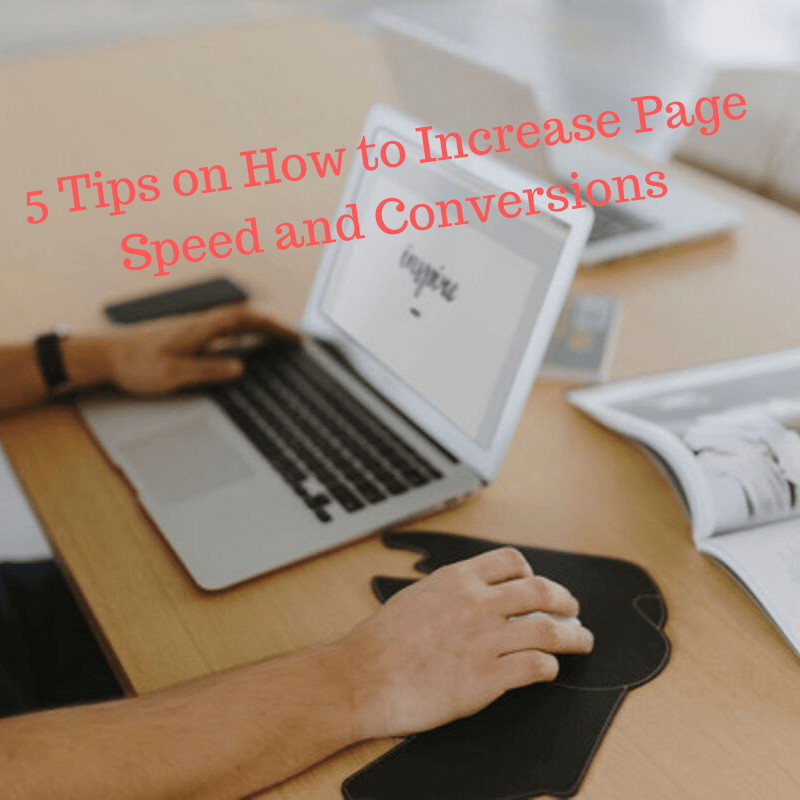![WordPress SEO: 14 Tools To Rank Higher on Google [Infographic]](https://blog.red-website-design.co.uk/wp-content/uploads/2018/09/14-SEO-Tools-That-Will-Help-Your-Site-Rank-Higher-on-Google.jpg)
Tag Archives: rank
Image SEO: How to Leverage Machine Vision – How to Rank Higher

Image search results used to give you the option to “view image” without having to navigate to the site the image was hosted on.
When it started in 2013, sites saw a 63% decline in organic traffic from image results.
Why?
Because there was no need to click through when the image could be viewed in full from within the search results.
And then everything changed. In February 2018, Google decided to remove the “view image” button. Now searchers must visit the site hosting that image directly, restoring image results to their former organic search driving power.
According to some recent studies, this change has increased organic image traffic a massive 37%.
Given image results’ return to value, marketers are asking themselves how they can make the most out of this search mechanism.
So what are some new ways we can leverage tools to better understand how to optimize images for ranking?
To explore this, I decided to see if Google’s Vision AI could assist in unearthing hidden information about what matters to image ranking. Specifically, I wondered what Google’s image topic modeling would reveal about the images that rank for individual keyword searches, as well as groups of thematically related keywords aggregated around a specific topic or niche.
Here’s what I did — and what I found.
A deep dive on “hunting gear”
I began by pulling out 10 to 15 top keywords in our niche. For this article, we chose “hunting gear” as a category and pulled high-intent, high-value, high-volume keywords. The keywords we selected were:
Bow hunting gear
Cheap hunting gear
Coyote hunting gear
Dans hunting gear
Deer hunting gear
Discount hunting gear
Duck hunting gear
Hunting gear
Hunting rain gear
Sitka hunting gear
Turkey hunting gear
Upland hunting gear
Women’s hunting gear
I then pulled the image results for the Top 50 ranking images for each of these keywords, yielding roughly ~650 images to give to Google’s image analysis API. I made sure to make note of the ranking position of each image in our data (this is important for later).
Learning from labels
The first, and perhaps most actionable, analysis the API can be used for is in labeling images. It utilizes state-of-the-art image recognition models to parse each image and return labels for everything within that image it can identify. Most images had between 4 and 10 identifiable objects contained within them. For the “hunting gear” related keywords listed above, this was the distribution of labels:
At a high level, this gives us plenty of information about Google’s understanding of what images that rank for these terms should depict. A few takeaways:
The top-ranking images across all 13 of these top keywords have a pretty even distribution across labels.
Clothing and specifically camouflage are highly represented, with nearly 5% of all images containing camo-style clothing. Now, perhaps this seems obvious, but it’s instructive. Including images in your blog posts related to these hunting keywords with images containing camo gear likely gives you improved likelihood of having one of your images included in top-ranking image results.
Outdoor labels are also overrepresented: wildlife, trees, plants, animals, etc. Images of hunters in camo, out in the wild, and with animals near them are disproportionately represented.
Looking closer at the distribution labels by keyword category can give use a deeper understanding of how the ranking images differ between similar keywords.
For “turkey hunting gear” and “duck hunting gear,” having birds in your images seems very important, with the other keywords rarely including images with birds.
Easy comparisons are possible with the interactive Tableau dashboards, giving you an “at a glance” understanding of what image distributions look like for an individual keyword vs. any other or all others. Below I highlighted just “duck hunting gear,” and you can see a similar distribution of the most prevalent labels as the other keywords at the top.
However, hugely overrepresented are “water bird,” “duck,” “bird,” “waders,” “hunting dog,” “hunting decoy,” etc., providing ample ideas for great images to include in the body of your content.
Here we can see that some labels seem preferred for top rankings. For instance:
Clothing-related labels are much more common amongst the best-ranking images.
Animal-related labels are less common amongst the best-ranking images but more common amongst the lower ranking images.
Guns seem significantly more likely to appear in top-ranking images.
By investigating trends in labels across your keywords, you can gain many interesting insights into the images most likely to rank for your particular niche. These insights will be different for any set of keywords, but a close examination of the results will yield more than a few actionable insights.
Not surprisingly, there are ways to go even deeper in your analysis with other artificial intelligence APIs.
An even deeper analysis for understanding
Deepai.org has an amazing suite of APIs that can be easily accessed to provide additional image labeling capabilities. One such API is “Image Captioning,” which is similar to Google’s image labeling, but instead of providing single labels, it provides descriptive labels, like “the man is holding a gun.”
We ran all of the same images as the Google label detection through this API and got some great additional detail for each image.
Just as with the label analysis, I broke up the caption distributions and analyzed their distributions by keyword and by overall frequency for all of the selected keywords. Then I compared to top and bottom ranking images.
A final interesting finding
Google sometimes ranks YouTube video thumbnails in image search results. Below is an example I found in the hunting gear image searches.
It seems likely that at least some of Google’s understanding of why this thumbnail should rank for hunting gear comes from its image label detection. Though other factors, like having “hunting gear” in the title and coming from the NRA (high topical authority) certainly help, the fact that this thumbnail depicts many of the same labels as other top-ranking images must also play a role.
The lesson here is that the right video thumbnail choice can help that thumbnail to rank for competitive terms, so apply your learnings from doing image search result label and caption analysis to your video SEO strategy!
In the case of either video thumbnails or standard images, don’t overlook the ranking potential of the elements featured — it could make a difference in your SERP positions.
Source https://moz.com/blog/image-seo-opportunities
P.S.
Free Leads to grow your business
5 Tips on How to Increase Page Speed and Conversions

Increasing website page speed is one of the biggest challenges for website owners and marketers. It’s too technical for marketers but it’s crucial for almost all aspects of marketing performance.
There is a direct correlation between page speed, bounce rate, and visitor retention. Also, Google’s official statement is that page speed is part of its ranking algorithm. It helps your online visibility and higher rankings on search engines.
Monitoring and improving website page speed should be the highest priority for any website.
Here are some stats you need to know.
Impact on on-page engagement: Sites that load in 5 seconds (compared to those that load in 19 seconds) increase their conversions about 70%
Impact on conversions: Studies in the UK show that 67% of online shoppers will abandon their carts on slow websites. Improving a page’s load time by one second can result in an increase of between 10% and 20% in conversion rates.
Impact on customer loyalty: Roughly 80% of online shoppers who have trouble loading a site say they won’t return to the site to buy again
Discover 5 tips on how to increase page speed and conversions.
1. Reduce Redirects
You will have more HTTP requests on your site if you have many redirects, and this could result in reduced page speed. Broken links also should be fixed, as these can have a massive impact on user experiences.
Netpeak Spider is a great tool to quickly find redundant redirects, broken links and redirect chains. Run the tool and then fix what it identifies, including:
Fix internal linking to point to the working URL (i.e. the https version), even if the old URL properly redirected to the new version.
Get rid of redirect chains — they are a series of redirects that bring you from one version to another. All those extra steps slow down your site.
Impact on conversions: Broken links and redirects may prevent many of your site users from following your sales funnel. Make sure to monitor and fix broken links and redirects in a timely manner.
2. Use a Content Distribution Network – CDN
A Content Distribution Network (CDN) consists of multiple data centers, each of which makes a copy of a specific website. These copies are stored in multiple geographic locations, providing users with more reliable and faster access to the website.
This tip is especially important for global businesses that receive a lot of traffic and conversions around the world.
Impact on conversions: A slow website will make your overseas customers give up on your website entirely. Monitor and improve your global performance with a Content Distribution Network.
3. Remove Render-Blocking Javascript
When looking at your website structure, refrain from using render-blocking Javascript (i.e. Javascript that prevents your page from rendering, i.e. loading), especially external scripts that have to be fetched before being executed.
The script that doesn’t need to be rendered immediately should be made asynchronous or deferred until after the first render.
This is especially important for the above-the-fold part of your page (the part that a user sees first).
Impact on conversions: Most traffic and conversion analytics platforms are installed using a Javascript code. Make sure yours aren’t slowing your website down. Finteza is an independent analytics company whose Javascript has no impact on your site performance — their event tracking doesn’t use any code at all!
4. Leverage Browser Caching
When users visit a website, the website builds a cache that contains information about Javascripts, images, stylesheets and more. This is done so that when a visitor comes back, the entire page doesn’t have to be reloaded.
This improves page speed, as it saves on time spent having to send multiple HTTP requests to the server. It also reduces the bandwidth and, as a result, the overall cost of site hosting.
Impact on conversions: It is a well-known fact that return customers bring the highest revenue, so this method ensures your return visitors receive a better experience.
5. Improve Server Response Time
Many factors can affect server response time, including the volume of traffic, the type of software used by the server and the hosting solution used.
As a general guideline, the server response time should be less than 200ms. This can be achieved by looking at different performance metrics and paying attention to things such as slow database requests, lack of memory or slow routing.
Impact on conversions: By monitoring your server performance properly, you’ll know whether there are any issues preventing people from interacting with your site properly (e.g. downtime, slow-downs, etc.)
P.S.
Discover more interesting articles, infographics, and free offers!
![Effective SEO Tips: How to Rank Higher on Google [Infographic]](http://blog.red-website-design.co.uk/wp-content/uploads/2019/06/SEO-in-2019-17-Tips-for-Beginners-to-Rank-Higher-on-Google.jpg)